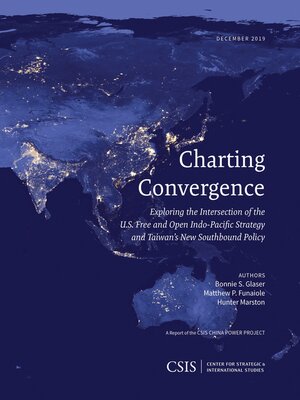Charting Convergence
ebook ∣ Exploring the Intersection of the U.S. Free and Open Indo-Pacific Strategy and Taiwan's New Southbound Policy · CSIS Reports
By Bonnie S. Glaser

Sign up to save your library
With an OverDrive account, you can save your favorite libraries for at-a-glance information about availability. Find out more about OverDrive accounts.
Find this title in Libby, the library reading app by OverDrive.



Search for a digital library with this title
Title found at these libraries:
| Library Name | Distance |
|---|---|
| Loading... |
Ongoing geopolitical shifts are placing increased pressure on the rules-based international order that has facilitated decades of growth and development across the Indo-Pacific. The United States and Taiwan have responded by redoubling their respective commitments to the region. Leaders in both Washington and Taipei recognize that securing freedom and openness across this vast geographic space is essential for maintaining peace and promoting prosperity across the region.
The United States has advanced its vision for the region through the Free and Open Indo-Pacific (FOIP) strategy, which is founded on—and aims to protect—common principles that have benefitted all countries in the region. Taiwan upholds the same principles and has a similar vision for the Indo-Pacific. To this end, Taipei is implementing the New Southbound Policy (NSP), which seeks to leverage its cultural, educational, technological, agricultural, and economic assets to strengthen Taiwan's relations across the Indo-Pacific.
The United States has advanced its vision for the region through the Free and Open Indo-Pacific (FOIP) strategy, which is founded on—and aims to protect—common principles that have benefitted all countries in the region. Taiwan upholds the same principles and has a similar vision for the Indo-Pacific. To this end, Taipei is implementing the New Southbound Policy (NSP), which seeks to leverage its cultural, educational, technological, agricultural, and economic assets to strengthen Taiwan's relations across the Indo-Pacific.







